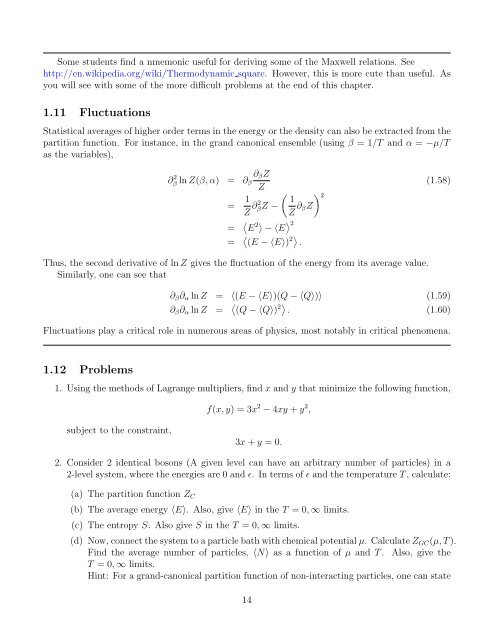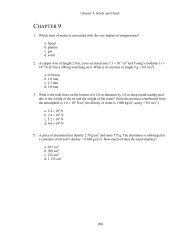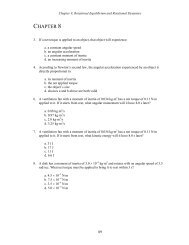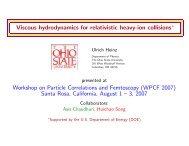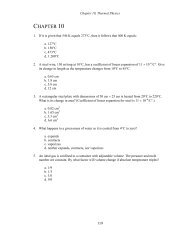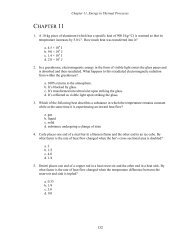lecture notes on statistical mechanics - Scott Pratt - Michigan State ...
lecture notes on statistical mechanics - Scott Pratt - Michigan State ...
lecture notes on statistical mechanics - Scott Pratt - Michigan State ...
Create successful ePaper yourself
Turn your PDF publications into a flip-book with our unique Google optimized e-Paper software.
Some students find a nmem<strong>on</strong>ic useful for deriving some of the Maxwell relati<strong>on</strong>s. Seehttp://en.wikipedia.org/wiki/Thermodynamic square. However, this is more cute than useful. Asyou will see with some of the more difficult problems at the end of this chapter.1.11 Fluctuati<strong>on</strong>sStatistical averages of higher order terms in the energy or the density can also be extracted from thepartiti<strong>on</strong> functi<strong>on</strong>. For instance, in the grand can<strong>on</strong>ical ensemble (using β = 1/T and α = −µ/Tas the variables),∂ 2 β ln Z(β, α) = ∂ β∂ β ZZ= 1 Z ∂2 βZ −( 1Z ∂ βZ) 2(1.58)= ⟨ E 2 ⟩ − ⟨E ⟩ 2= ⟨ (E − ⟨E⟩) 2⟩ .Thus, the sec<strong>on</strong>d derivative of ln Z gives the fluctuati<strong>on</strong> of the energy from its average value.Similarly, <strong>on</strong>e can see that∂ β ∂ α ln Z = ⟨(E − ⟨E⟩)(Q − ⟨Q⟩)⟩ (1.59)∂ β ∂ α ln Z = ⟨ (Q − ⟨Q⟩) 2⟩ . (1.60)Fluctuati<strong>on</strong>s play a critical role in numerous areas of physics, most notably in critical phenomena.1.12 Problems1. Using the methods of Lagrange multipliers, find x and y that minimize the following functi<strong>on</strong>,f(x, y) = 3x 2 − 4xy + y 2 ,subject to the c<strong>on</strong>straint,3x + y = 0.2. C<strong>on</strong>sider 2 identical bos<strong>on</strong>s (A given level can have an arbitrary number of particles) in a2-level system, where the energies are 0 and ϵ. In terms of ϵ and the temperature T , calculate:(a) The partiti<strong>on</strong> functi<strong>on</strong> Z C(b) The average energy ⟨E⟩. Also, give ⟨E⟩ in the T = 0, ∞ limits.(c) The entropy S. Also give S in the T = 0, ∞ limits.(d) Now, c<strong>on</strong>nect the system to a particle bath with chemical potential µ. Calculate Z GC (µ, T ).Find the average number of particles, ⟨N⟩ as a functi<strong>on</strong> of µ and T . Also, give theT = 0, ∞ limits.Hint: For a grand-can<strong>on</strong>ical partiti<strong>on</strong> functi<strong>on</strong> of n<strong>on</strong>-interacting particles, <strong>on</strong>e can state14


